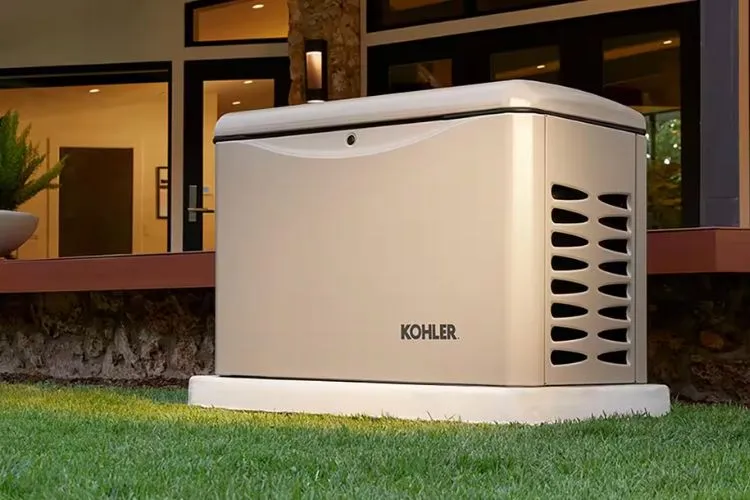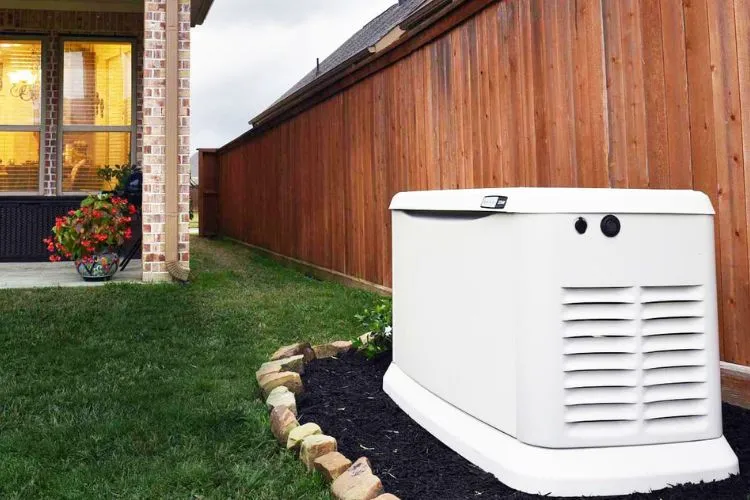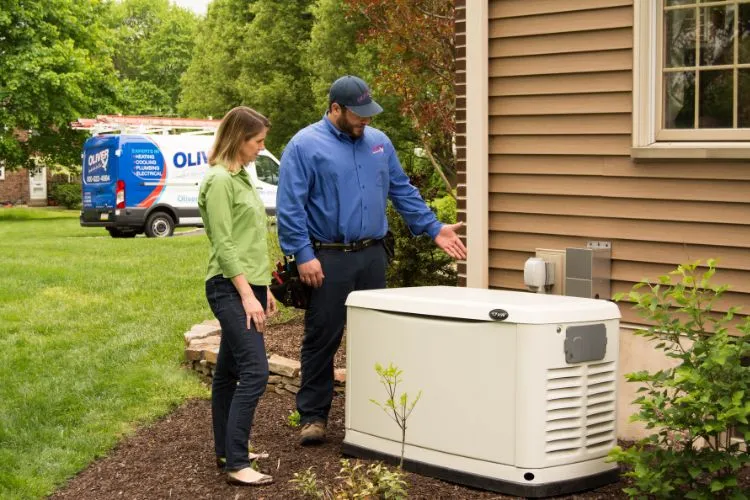When the power goes out, life can come to a standstill. This is where a standby generator becomes an asset.
It ensures that your home or business keeps running smoothly during power outages.
But, what size standby generator do you need? Honestly speaking, it’s crucial to select the right-sized generator to avoid any unnecessary trouble.
It ensures that you have sufficient power to cover your needs without wasting money on unused capacity. This article aims to guide you through the process of making this vital decision.

Understanding Standby Generators
A standby generator is a backup electrical system. It automatically turns on during a power outage. It’s a permanent fixture installed near your home or business.
The advantages are many. With a standby generator, you can keep lights, HVAC systems, refrigerators, and medical equipment running.
In comparison, portable generators are smaller. They need manual setup during an outage. Standby generators are more about convenience and reliability.
Assessing Your Power Needs
Determining your power needs is the first step in choosing a generator. The process involves listing all the appliances you need to run during an outage.
You then calculate their total power consumption. It’s not just about the running watts. You also need to account for starting watts. Starting watts are the extra power needed to start motor-driven products.
This initial power surge can be several times the running watts. A comprehensive checklist that includes the power ratings of devices can be helpful in this process.
What Size Standby Generator Do You Need?
Power Requirements
Choosing the right size involves balancing essential and non-essential needs. Too small, and the generator will fail to power all your devices. Too large, and you’ll overpay for unneeded capacity. It is critical to determine your essentials.
These could be heating systems, sumps, and refrigeration for homes. For businesses, they may include servers and security systems.
Fuel Source and Efficiency
Standby generators can operate on various fuels such as natural gas, propane, or diesel. The choice of fuel influences the generator’s size. It also impacts its efficiency and running costs.
Natural gas may be convenient but propane could be more efficient. Diesel generators are durable and can be more fuel-efficient.
Physical Space and Location
Before installation, think about where to place your standby generator. You’ll need enough space for the generator itself and for safe operation.
Remember to consider noise control. Follow local regulations to avoid fines.
Future Expansion
Plan for future growth. If you might add more circuits or electrical appliances, consider a larger generator. It’s more cost-effective than buying a new generator later on.
Common Sizes of Standary Generators

Standby generators come in a range of sizes. Smaller homes can often be supported by a 7-10 kW generator. This can power a few essentials.
A 20-30 kW generator can cover a small-to-average home’s entire power needs. Large homes and businesses may need generators with 50 kW capacity or more.
These large generators can handle multiple air conditioning units and high-demand commercial environments.
Installation and Professional Assessment
Installing a standby generator is complex. It usually involves working with high-power electrical systems and gas lines. This is why professional installation is critical.
A certified electrician can determine the right size based on your power needs. They also ensure that the installation is safe and complies with all local codes.
Pro Tips
Work with utility companies to understand your power usage. Consider an energy audit to reduce energy consumption.
Smart generators with load management technology can adjust power distribution as needed.
Financial Considerations
When contemplating the addition of a standby generator, the upfront cost—including purchase and installation—can be substantial.
However, weighing this initial investment against the potential long-term savings is crucial.
A standby generator significantly mitigates losses during power outages, safeguarding essentials like refrigerated goods and preventing basement flooding by ensuring sump pumps stay operational. Over time, these savings can offset the initial expenditure.
The operating cost of a standby generator varies by size and fuel type. Generators run on natural gas, propane, or diesel, each with different fuel consumption rates and price points. Larger units offer more power but consume more fuel, leading to higher operational costs.
Regular maintenance is vital to ensure efficiency and prolong the unit’s life, adding to the operating expenses. However, selecting an appropriately sized generator and performing routine maintenance can optimize operational costs, striking a balance between readiness for outages and economic operation.
Maintenance and Trouleshooting

Routine Maintenance Schedule: To ensure longevity and reliable operation, perform annual inspections and servicing of your standby generator.
This includes checking the engine oil and coolant levels, testing battery condition, and replacing air and fuel filters. Bi-annual testing under load conditions is also recommended to verify operational readiness.
Common Issues and Troudoing: Common problems with standby generators include battery failure, fuel issues, and control panel malfunctions.
Regularly test the generator and check for error codes. Simple troubleshooting steps include ensuring fuel lines are intact and batteries are charged.
For more complex issues like persistent error codes or mechanical failures, professional service is advisable. This proactive approach prevents more significant repairs and ensures the generator functions efficiently when needed.
Frequently Asked Questions (FAQs)
What is the difference between kW and kVA?
kW (kilowatt) is the unit of actual power while kVA (kilovolt-ampere) is the unit of apparent power. For home use, focus on kW.
How often should I run my standby generator?
You should run a standby generator at least once a month to ensure it operates properly.
Can I install a standby generator myself?
Due to safety and local codes, it’s best to get professional installation.
What is the average life expectancy of a standby generator?
With proper maintenance, standby generators can last 10-20 years.
How does weather impact the performance of a standby generator?
Extreme weather can affect a generator’s performance. Make sure it’s installed in a location that shields it from harsh weather conditions.
Conclusion:
Choosing the right size standby generator is a careful balance of power needs, fuel efficiency, physical space, and long-term planning.
Don’t overlook professional advice when making your selection.
